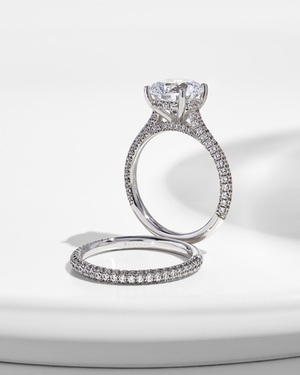- CityPages.Pro
- Blog
- Demystifying Interesting Facts About Certified Loose Diamonds
Demystifying Interesting Facts About Certified Loose Diamonds

Looking for loose diamonds? Search for certified loose diamonds by a reputable gemological laboratory like the GIA or AGS to ensure you are buying in a safe, secure, and trustworthy setting, whether online or in a real store. While in-house assessments might offer more details, your loose diamond must possess a third-party laboratory certificate to ensure you receive what you pay for. In this article, learn how loose diamonds are certified and how to identify one before purchase. So, let’s start.
Loose Diamonds: How Are They Certified?
International diamond trade associations oversee diamond grading, including the GIA, HRD, AGS, and IGI. There will never be two diamond graders who grade a diamond precisely alike. A certified loose diamond's carat weight, cut, clarity, and color all affect its value.
Like ordinary loose diamonds, AGS or GIA-certified loose diamonds are evaluated identically. The only difference is the requirement for grading certificates to be included by producers that sell certified diamonds. Every one of these elements influences the diamond's overall quality. Carat weight and clarity are the most important factors.
The number of visible inclusions (or imperfections) inside a diamond is called its clarity. A more exact stone has fewer imperfections. Due to their higher content and higher mining and production costs, larger diamonds are more costly than smaller ones.
A diamond's cut refers to its level of shape and polish; it should be highly reflective. Simply put, only the best ones receive diamond certification.
Loose Diamonds: How to Know If They Are Certified?
The GIA or AGS doesn’t certify all diamonds offered for sale. Still, most do, and if you ask, you'll probably be able to see its grade information. Ask the jeweler to show its grading report when looking for GIA or AGS-certified loose diamonds. This report will include insights into the diamonds’ 4 C's—cut, carat, clarity, and color.
- To ensure they show an authentic report, visit the official AGS or GIA report check website. You can find a digital copy of the report here.
- An individual number is assigned to each report, which occasionally appears on the diamond's girdle as well. When you search GIA’s database, you will use this number.
Understanding the quality will help you compare the gem's price range to other diamonds while looking for one. Globally, consumers and experts alike recognize diamonds with GIA or AGS diamond certification. All the certified loose diamonds undergo a meticulous and impartial process.
Why Buy Certified Loose Diamonds?
Purchasing certified loose diamonds makes more sense when it comes to investment. Diamond-set jewelry such as earrings, necklaces, bracelets, and engagement rings do not retain their value like loose diamonds.
Certified loose diamonds consistently perform better even when diamond prices vary. If a diamond is already set in jewelry, it might be challenging to examine it for visible inclusions or faults if you are not a jewelry grader. Setting metal prongs may block and conceal flaws. There is a certification for the diamond. But fear not—it is flawless.
Conclusion
You will find the process of buying a GIA or AGS-certified loose diamond much simpler now that you are aware of every element. You can more accurately appraise diamonds and determine their fair market value thanks to GIA's grading and certification system. So, remember always check for diamond certification if you need assurance regarding a diamond's quality.
Contact Us For More Information: https://www.lorililjewelers.com/contact-us.html